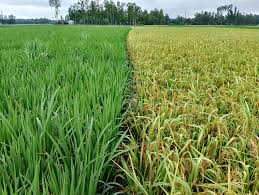A marketing channel is simply the path of a commodity from its raw form to the finished form or the path of a product as it moves from the producers to the final consumers.
Marketing channels are important in evaluating marketing systems because they indicate how the various market participants are organized to accomplish the movement of a product from the producer to the final consumer. The two types of marketing channels are:
1. Centralized Channel: A centralized marketing channel is one in which the farmer’s products are brought together in larger central and terminal markets, where they are purchased by processors or wholesalers from commission men and brokers who act as the farmer’s selling agents.
2. Decentralized Channel: A decentralized channel is one that does not use such established large market facilities; rather, wholesalers and processors purchase directly from the farmers. The marketing channel for agricultural products in Nigeria is mainly the decentralized type.
Marketing Chains In Agricultural Products
The marketing chain describes the succession of markets through which products pass until they reach the consumers. The marketing chain is part of the marketing channel. The study of the marketing chain is important because it reveals the relative importance of various markets or exchange points in the marketing system.
Some commodities have a long marketing chain, for others, the chain is short. A long marketing chain implies that the commodity changes hands many times before reaching the final consumer. The longer the chain is, the higher the price that the consumer will have to pay for the commodity. The length of the chain depends on the nature of the commodity and how far the consumers are from the producing areas.
Read Also: Pig Breeds: Origin, Indigenous and Exotic Breeds of Pigs
Organizational Expansion in Agribusiness

There are two main ways in which marketing firms can grow in size: integration and growth by diversification.
Market Integration in Agriculture
Market integration is the grouping of firms that perform similar functions under one management. It enables marketing firms and agribusiness firms to grow in size and increase their market power.
There are two types of integration:
1. Vertical Integration: This is one in which a firm combines activities that are not similar to its present function but related to them in the sequence of marketing activities. The simplest meaning of vertical integration is ‘Ownership’. When a firm owns two or more levels of production or marketing, it is vertically integrated.
A livestock feed company that feeds its own livestock rather than selling the feed alone is said to be vertically integrated. Likewise, a meat packer that owns retail stores and sells meat directly to consumers is vertically integrated.
For example, a meat packer may decide to increase the scope and size of its firm by integrating backward to reach the producers by opening buying points for livestock or producing its own livestock and integrating forward to reach the consumers by opening up cold stores, supermarkets, or other retail points.
2. Horizontal Integration: This refers to a situation where a firm gains control over other firms performing similar activities at the same level in the marketing sequence. For example, small firms that handle dairy products could decide to merge with bigger and more viable ones.
In the same vein, smaller firms that handle processed meat could decide to merge with bigger firms in the same business. Such mergers enable the firms involved to enjoy a wider market share of the product and also to exercise greater market power. In some countries, governments enact laws to discourage excessive mergers of big firms to prevent monopolistic and oligopolistic tendencies.
Read Also: The Potentials and Constraints to Pig Production in Developing Countries
Growth By Diversification in Agriculture

This is the growth in size or expansion of marketing firms or agencies by the merger of organizations that do not have any direct relationship with the activity of the individual firms. For example, Leventis Group consists of firms engaged in brewery, meat processing, supermarkets, farming, glass production, bottling of soft drinks, etc.
UAC also comprises Kingsway, SCOA Motors, bottling firms, breweries, farming, etc. All these integration efforts are attempts to organize or co-ordinate the marketing firms to obtain increased operating efficiency or wider market power in the selling or buying process.
Other advantages of integration are:
1. Shortened Marketing Chain: It shortens the marketing chain between the producer and the final consumer. Integration thus helps to reduce marketing margin.
2. Increased Profit: Integration could increase the profit of a firm because it may place a firm in a more advantageous bargaining position while its greater share of the market power could help the firm to influence the market price.
3. Improved Efficiency: Integration could also enable a firm to operate with greater efficiency and lower cost. It guarantees a steady supply of inputs to agribusiness firms and ensures the uninterrupted flow of products to consumers.
However, some disadvantages of market integration include the concentration of market power in a few firms. For example, the vertical integration of a firm already possessing substantial market power may be anti-competitive because it may make entry more difficult for potential competitors, and it gives the integrated firm the power to exert a price squeeze.
For example, a flour mill that dominates milling and then integrates forward into baking could squeeze the other bakers by raising flour prices to them.
Do you have any questions, suggestions, or contributions? If so, please feel free to use the comment box below to share your thoughts. We also encourage you to kindly share this information with others who might benefit from it. Since we can’t reach everyone at once, we truly appreciate your help in spreading the word. Thank you so much for your support and for sharing!
Read Also: The Impact of Business Waste Recycling Services on Our Environment

